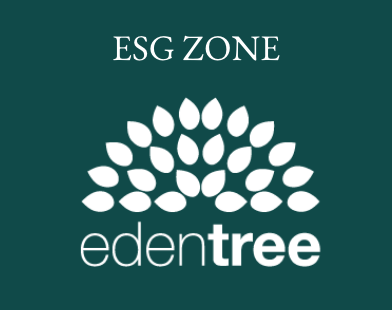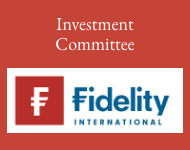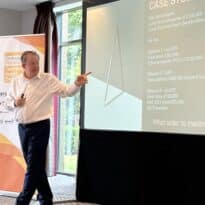For her regular article for Professional Paraplanner, this month Juliet Schooling Latter, research director at FundCalibre, looks at the Asia market, notably the higher rate of dividend growth, and how the Jupiter Asian Income fund is positioned to benefit from it.
We are now at a point where the diversification of the equity market is the lowest it has been for a generation. The last time we saw anything like this was back in 2002, when we saw a significant rebound which benefitted every sector, apart from US large-caps*. Diversification is an essential investment tool and there are plenty of attractively valued alternatives to consider, but there is one area of the market which offers growth, dependability and dividends that I believe is often overlooked.
In fact, I’d argue the case for Asian dividends is also misunderstood. For example, a common misconception is that Asia is driven by growth, when the reality is that dividends drive the majority of long-term equity returns (71%)**. A recent research report I read also showed that Asian dividends have more than tripled over the past two decades. The region still holds some of the lowest payout ratios globally, leaving ample room for companies to allocate a greater portion of earnings to shareholders**.
These dividend-paying companies have also delivered strong performance during times of market stress – as income payers typically have strong balance sheets and consistent earnings**. They could be coming into their own with Trump’s tariffs, a slowdown in China and rising geopolitical uncertainty all hitting the market hard.
A fund for all seasons
This month’s fund has a beta of 0.8*** – and has demonstrated that it tends to perform incredibly well in challenging markets, with a lower drawdown.
With more than three decades of experience, Jupiter Asian Income manager Jason Pidcock is a veteran in this market. He combs the breadth of the Asia Pacific market in search of large companies with reliable dividends that can deliver both income and growth for investors. The fund’s higher number of developed market holdings, notably in Australia, as well as its income mandate, make it a relatively defensive Asia Pacific option, although it is also high conviction – with only 29 holdings^. Currently all bar one of those holdings (TSMC) has a greater weighting in the portfolio than the fund’s benchmark – reflecting the active nature of the fund.
While the main driver behind an investment is the company fundamentals, Jason doesn’t believe you can invest without consideration to the macroeconomic backdrop, and therefore starts his process with a top-down analysis.
While the macro inputs and themes will help make the investment case, Jason will need the right companies, with the characteristics he likes, in order to build the portfolio. He will only invest in large-caps — those companies above $3bn in market cap.
When it comes to income generation, Jason will hold a combination of stocks that yield more than the index, and up to 20% in lower-yielding companies that have the potential to grow their dividends. Stocks will be weighted depending on their income generation and the attractiveness of their valuation.
Jason actively looks to build as diversified a portfolio as possible to ensure it performs regardless of whether global growth falters or investment styles change.
He says: “We have that diversity within the portfolio, e.g. a defence business, a gold miner and telecom, utility and consumer staples companies. We would expect these businesses to be more insulated from events outside the region.”
Alternative exposure to China
Jason is not afraid to make big calls on the fund, most notably his decision to remove all his holdings in China in 2022. He believes the door will remain shut as long as Xi Jinping remains president, citing his repressive and antagonistic policies. It should be noted that the fund does get around 14% of its revenues from China but the companies are not domiciled in the region and therefore have autonomy.
The fund also has minimal exposure to South Korea amid concerns about challenging demographics. As top-down stock pickers, the process has highlighted four countries presenting strong opportunities. They now account for 85% of the portfolio between them^.
India is almost the opposite of South Korea, with a young population and a growing jobs market. It has a strong economy, stable politics and fairer valuations following a recent sell-off. Names held include the likes of consumer staples business ITC, utility transmission company Power Grid and HDFC, the largest private bank in India and a play on people getting more mortgages in the country***.
The team have a diverse range of holdings in Australia, from the likes of global packaging company Amcor to the largest mining company in the world in BHP. Other names include gold miner Newmont, and Macquarie***.
Singapore is popular due to its attractive political and legal system – while many multinational companies have their headquarters there (the fund has names like DBS Bank and Singapore Telecoms)^.
Taiwan completes the quartet – and is another economy expected to see growth this year, boosted by its semiconductor companies amid robust demand for AI-related hardware and applications. TSMC, the world’s largest contract chip maker, and Hon Hai, the world’s largest contract electronics maker, are two prominent companies. Technology is currently the largest individual sector exposure in the fund, accounting for roughly a third of the portfolio^.
Clearly the fund can be caught out, for example China invading Taiwan overnight would cause issues (as it would for the rest of the world), but the focus on the largest and most liquid companies gives investors a great deal of comfort. The fund even has the ability to target the likes of gold and other defensive holdings to offset these concerns through diversified/defensive positions.
This fund has to be a strong consideration for investors looking for diversification in terms of region and dividends. It has an experienced manager, excellent performance and is a reliable, defensive choice that offers something genuinely different from the peer group and benchmark.
*Source: Lombard Odier, 20 January 2025
**Source: Schroders, 29 January 2025
***Source: Jupiter, March 2025
^Source: fund factsheet, 31 January 2025
Past performance is not a reliable guide to future returns. You may not get back the amount originally invested, and tax rules can change over time. Juliet’s views are her own and do not constitute financial advice.
Main image: maria-stewart-g6DmKxFoQfE-unsplash
































